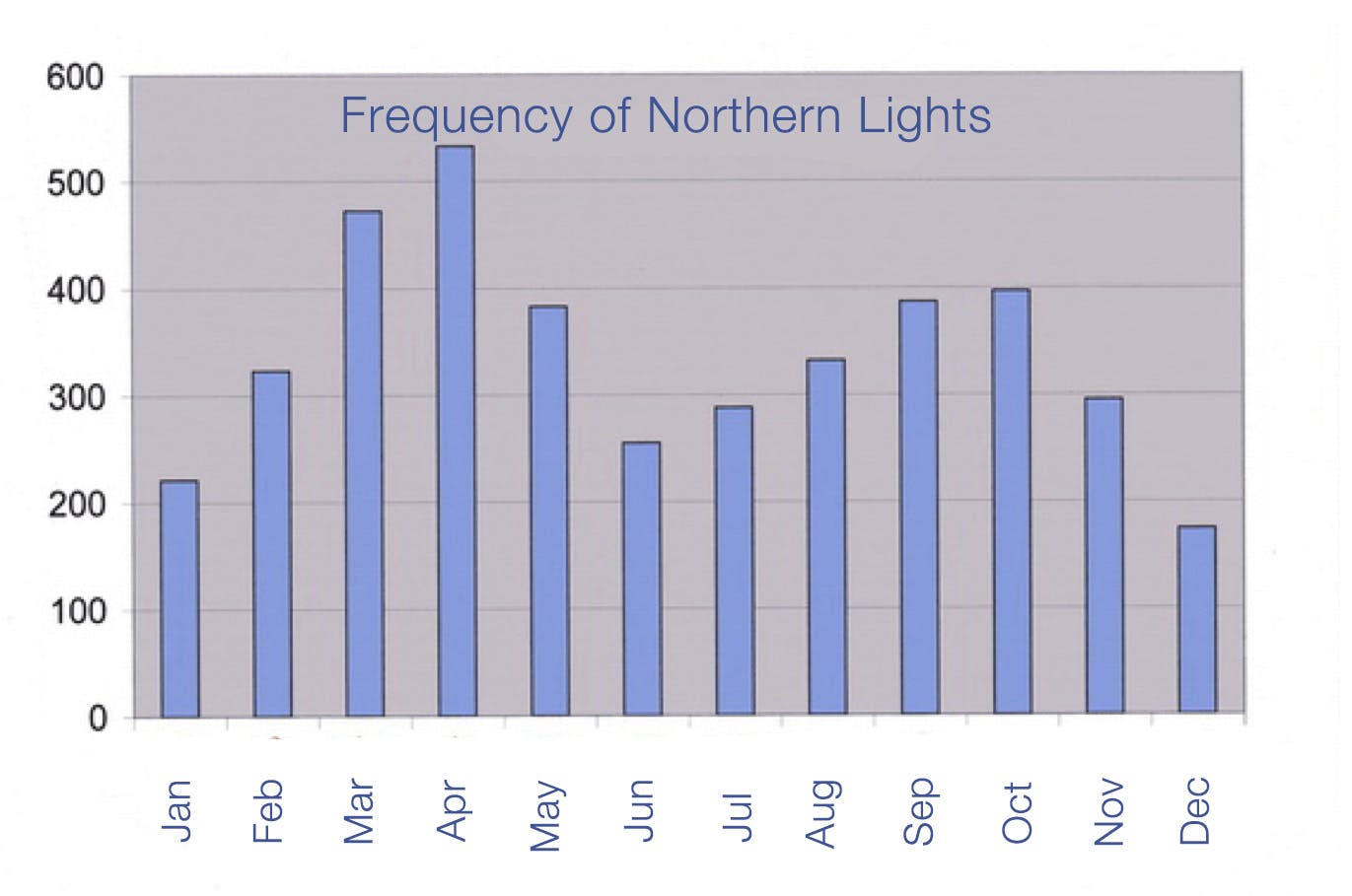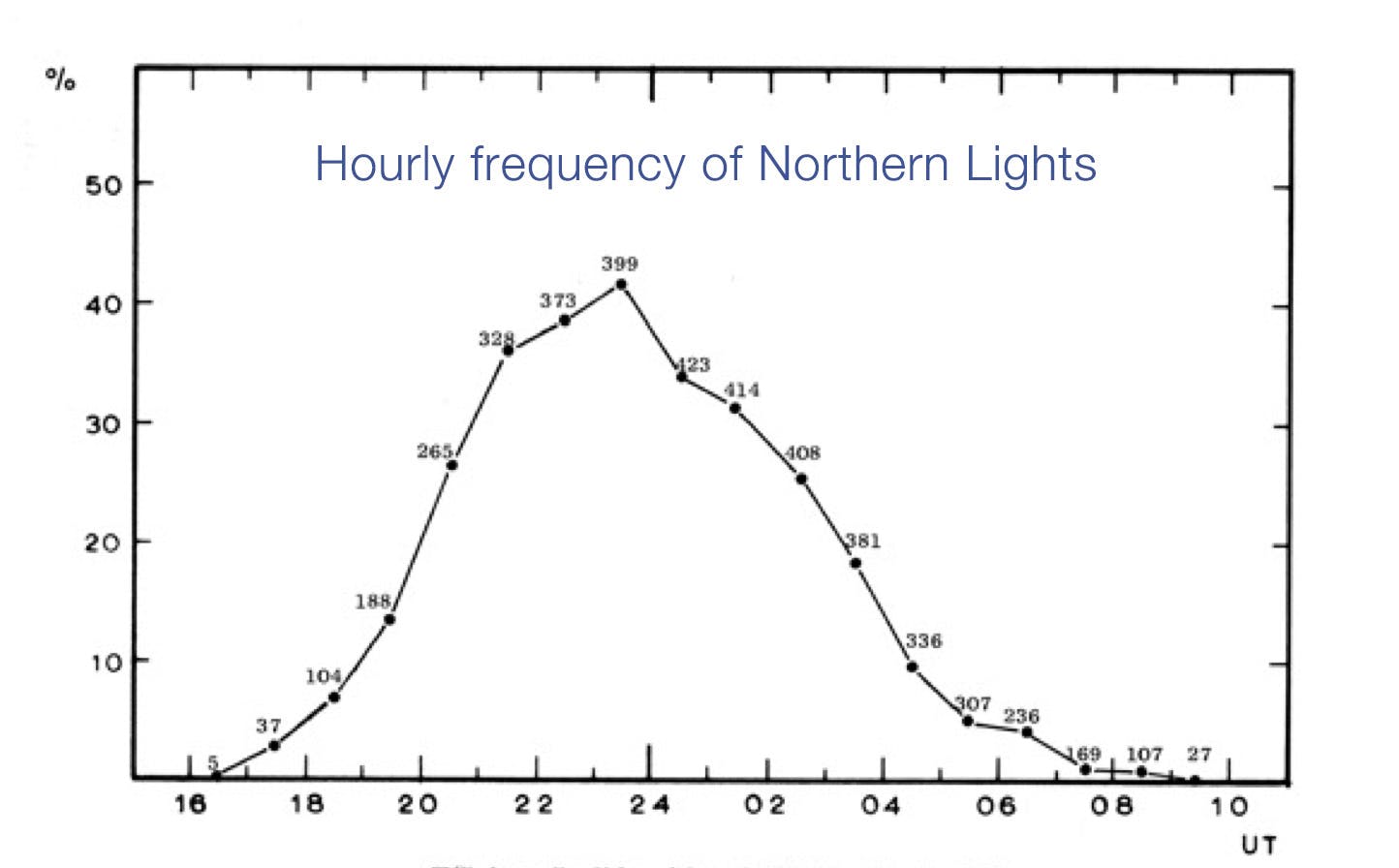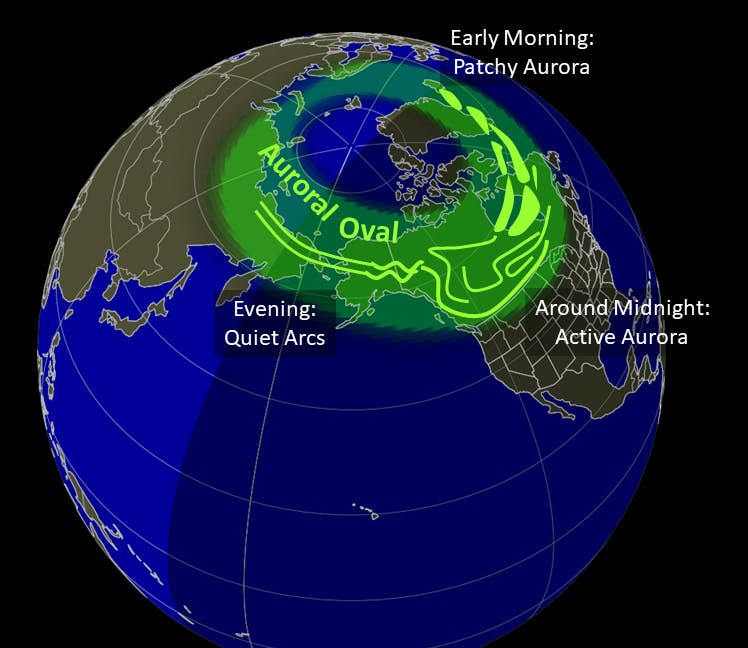When's the best time to see Northern Lights in Iceland?
Aurora can spark up any time of the year and any time of night. However, you are likelier to see Northern Lights around the equinoxes and at around 11 pm in the evening.
In Iceland, the Northern Lights season runs from roughly middle of August until the end of April. In other words, when it’s dark enough for stars and Northern Lights to be visible. Bright aurora displays can also be seen during the darkest hours of early August and earliest days of May.
In May, June and July, the summer nights are bright, rendering Northern Lights invisible.
Observations show that on average, you are likelier to see Northern Lights close to the equinoxes. Therefore, the months of September/October and March/April are often a very good bet. This is evident in the data presented here from Leirvogur Magnetic Observatory and shows this effect known as the Russell-McPherron effect.

Keep in mind, however, that this is an average. An active Sun can produce beautiful aurora displays frequently in between the equinoxes. So, November, December, January and February always bring lovely displays too. It just depends on the Sun.
But why are the months close to equinoxes the best? The reason is Earth's axial tilt relative to the Sun at that time.
Around the equinoxes, neither hemisphere is tilted away from or towards the Sun. Earth is perpendicular to our star which means Earth's magnetic field is nearly at a right angle to incoming solar wind. That makes it more receptive to high speed solar wind and coronal mass ejections. Therefore, the Bz south component is more likely to connect with Earth's north-pointing magnetic field. This is called the equinoctial effect.
Conversely, during the solstices in June and December, the axial tilt of Earth makes this magnetic connection less likely to happen. This is why December and January sees, on average, less aurora activity. Around the equinoxes, even slow solar wind can spark lovely Northern Lights.
What's the best time of night to see the Northern Lights?
Observations reveal that, on average, the best time of night to see the Northern Lights from Iceland is around 23:00 (11:00 pm). Of course, if the activity is high, the Northern Lights can be seen quickly after sunset and all throughout the night.
The graph below shows time of highest activity based on decades of observations at Leirvogur Magnetic Observatory. As you can see, often your best bet is to be on the lookout for Northern Lights between 22:00 and 01:00 or so.

Why is 11 pm (23 UT) often the best time of night to see the Northern Lights?
11 pm in Iceland is magnetic midnight. That is when the magnetic pole is directly between the observer (you) on Earth's surface and the Sun. At that moment, the aurora reaches its largest extent.
The geomagnetic poles are offset of the geographical poles by about 11 degrees. Magnetic midnight is therefor not at the same time as local conventional midnight. In Iceland, it is around 11 pm in Reykjavík and 10:30 pm in the east.

The solar particles that cause the northern lights are funnelled towards to polar regions from the magnetic tail of Earth’s magnetic field, on the nightside of the Earth. At 11 pm, at magnetic midnight, Iceland is tilted towards this region, the area of the strongest auroral activity. This area is always opposite of the Sun's position and so rises in the evening and sets in the morning.
This is why the Northern Lights are, on average, most common around 11 pm.
Magnetic midnight is very helpful knowledge when chasing the Northern Lights. When solar activity is low, there's no need really to go outside very early in the evening. A better bet is to look up to the skies from 10 pm and watch closely the real time space weather data, especially the Bz value.
References
- C. T. Russell, R. L. McPherron (1973). Semiannual variation of geomagnetic activity, Journal of Geophysical Research.
- H. Zhao, Q.-G. Zong (2012). Seasonal and diurnal variation of geomagnetic activity: Russell-McPherron effect during different IMF polarity and/or extreme solar wind conditions, Journal of Geophysical Research: Space Physics.
Sævar Helgi Bragason is an award winning astronomy and science communicator and educator, lecturer, author, TV host and owner and editor of icelandatnight.is and eclipse2026.is.


